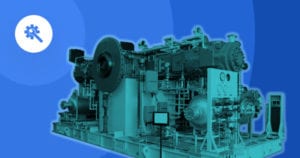
Artificial intelligence (AI) is everywhere these days, making inanimate objects increasingly smart. It’s designed by humans for humans, to enrich and facilitate our everyday lives. As a matter of fact, AI is now the brain behind your smartphone, car, music streaming service, banking app, freezer, and travel agency. It’s not only omnipresent, it’s omniscient as well.
If the main keyword for AI is “smart”, then how come we don’t talk more about this burgeoning technology in the context of knowledge, learning, and education? AI has everything we need to revolutionize the industry, enrich and facilitate the learning experience of students and adult learners, and boost the knowledge retention rates across the board.
It’s a whole new chapter in the history of the classroom. The change has already begun, with AI reshaping eLearning as we know it. Find out how.
AI Makes Personalized Learning a Child’s Play
Every student is different. Educators have known this for a long time, but it wasn’t until LMS software solutions that they were able to actually accommodate the various needs of different types of learners.
The introduction of technology to the traditional classroom established a framework for blended learning, which is now the dominant model for educating modern-day students. Essentially, blended learning allows students to choose how they access educational content, and how they acquire knowledge in terms of learning styles and speed. But AI brings personalization to a whole new level.
Unlike teachers, artificial intelligence can recognize students’ learning needs, interests, preferences, habits, and capacities automatically and in real-time, by analyzing their performance. This powerful insight helps create highly personalized learning environments and paths where every aspect – from content type to delivery method – is adjusted to the students’ individual needs.
The result? Optimum performance of every learner.
AI is at Learners’ Disposal Anytime, Anywhere
In combination with personalized learning paths, unlimited connectivity makes it possible for students to access educational content from anywhere and at any given moment.
Adaptive learning environments enable and encourage self-paced learning, thus allowing students to make the best out of their peak productivity hours. But what happens if one learner’s productivity peaks in the middle of the night, when there’s no one around to help solve a dilemma or address points of confusion?
Since blended learning is a combination of instructor-led training and online courses, tutors should remain available 24/7, whenever students may need their guidance. This may not be possible with human tutors, but it is with digital assistants.
Thanks to machine learning and natural language processing, AI assistants can learn to provide necessary guidance to students, answer their questions, and solve their problems. And since machines never sleep, this digital mentorship is available 24/7.
Digital Mentorship Can Encourage Engagement
Usually, AI assistants work with students individually. Extending the concept of student-centered education, smart technology caters not only to different learning styles but also to different personalities and temperaments. This is significant to introverted students, who usually don’t feel comfortable expressing themselves in front of their peers in the traditional classroom environment.
Faceless AI is a saving grace for such learners as it allows them to voice their dilemmas without the fear of being judged, while the eLearning environment itself encourages them to participate in social learning. Of course, AI has the potential to motivate and engage all students, be they introverts or extroverts, visual learners or auditory learners.
Higher engagement is a natural consequence of personalization – by facilitating the learning path, AI makes knowledge acquisition easier, thus eliminating all frustration from the process. All students thrive in such a learning and development (L&D) environment when they are motivated by their own achievements.
AI Allows Continual Real-Time Improvement
Thanks to cutting-edge software technology and authoring tools, everyone can learn to create an online course that encourages engagement and equips students for success.
It’s maintaining this eLearning environment that’s hard, especially in today’s fast-paced world. Technology is a powerful knowledge acquisition tool – the more potent it becomes, the more we understand about the world we live in. The human race is learning on a daily basis.
The road from tacit to explicit knowledge was a long one in the pre-digital age. At times, students had to wait years before new findings were added to their old textbooks. Today, we have the Internet – the biggest and fastest knowledge base in history.
With AI, we can now comb through this knowledge base in matters of minutes, update our online courses with cutting-edge information in real time, and keep educational content relevant. Having said that, up-to-date content is not enough to ensure a rich learning experience. Educators and online course creators must learn from their students as there are always challenges that need to be addressed. Because of this, student feedback is precious.
Real-Life Examples of AI in Learning
Let’s now see a few companies who are working behind the scenes to bring the benefits of AI-powered technologies to people.
Nuance
Massachusetts-based software technology company, Nuance builds speech recognition software. The technology can transcribe a maximum of 160 words per minute. It is useful especially to learners with mobility challenges, including writing. Instructors too can rely on it to dictate classroom lectures and expedite repetitive tasks such as emails.
Carnegie Learning
As a provider of quality math education, Carnegie Learning brings together artificial intelligence and machine learning to its platform. It puts emphasis on personalized learning experiences to turn learners into critical thinkers, creative problem solvers, and lifelong learners. By combining cognitive and learning science with research and practical instructions, CL helps students gain a deeper understanding of what they are learning.
Century
Century is a provider of an AI-based teaching and learning platform located in London. It provides adaptive learning solutions for learners according to their strengths and weaknesses, while helping instructors simplify their routine tasks such as grading. For this, it combines AI, neuroscience, and data analytics.
Closing Remarks
Artificial intelligence is already making waves in the eLearning industry by unlocking exciting new opportunities for educators and students alike. But deep personalization, 24/7 availability, increased engagement, and real-time improvement are only a fragment of what AI may mean for the future of education. Experts predict that the use of this smart technology will grow by 47.5% in the next two years. We can only imagine the possibilities.




 Related Podcast Episode
Related Podcast Episode




 Related Applications
Related Applications


 Latest IoT News
Latest IoT News









